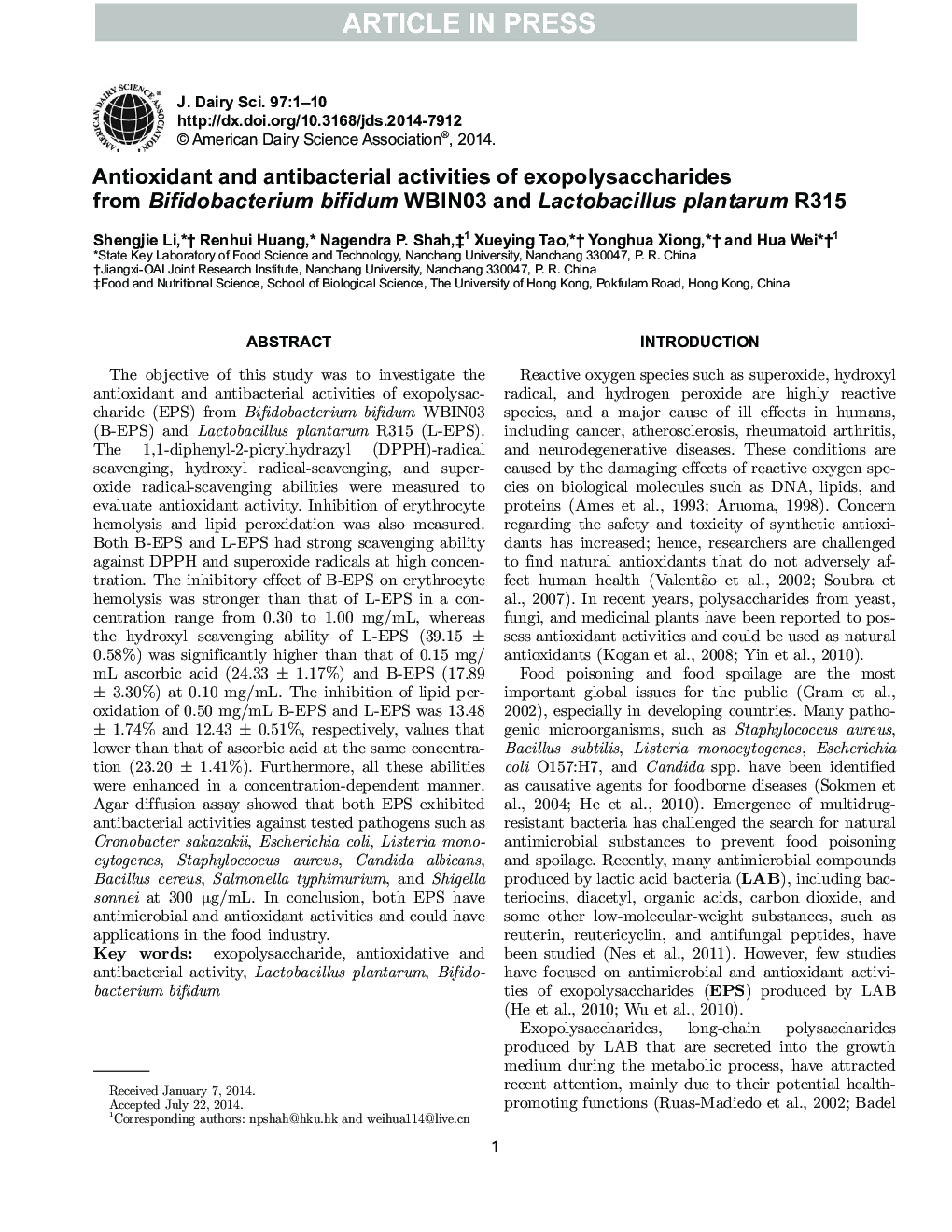| Article ID | Journal | Published Year | Pages | File Type |
|---|---|---|---|---|
| 10973452 | Journal of Dairy Science | 2014 | 10 Pages |
Abstract
The objective of this study was to investigate the antioxidant and antibacterial activities of exopolysaccharide (EPS) from Bifidobacterium bifidum WBIN03 (B-EPS) and Lactobacillus plantarum R315 (L-EPS). The 1,1-diphenyl-2-picrylhydrazyl (DPPH)-radical scavenging, hydroxyl radical-scavenging, and superoxide radical-scavenging abilities were measured to evaluate antioxidant activity. Inhibition of erythrocyte hemolysis and lipid peroxidation was also measured. Both B-EPS and L-EPS had strong scavenging ability against DPPH and superoxide radicals at high concentration. The inhibitory effect of B-EPS on erythrocyte hemolysis was stronger than that of L-EPS in a concentration range from 0.30 to 1.00 mg/mL, whereas the hydroxyl scavenging ability of L-EPS (39.15 ± 0.58%) was significantly higher than that of 0.15 mg/mL ascorbic acid (24.33 ± 1.17%) and B-EPS (17.89 ± 3.30%) at 0.10 mg/mL. The inhibition of lipid peroxidation of 0.50 mg/mL B-EPS and L-EPS was 13.48 ± 1.74% and 12.43 ± 0.51%, respectively, values lower than that of ascorbic acid at the same concentration (23.20 ± 1.41%). Furthermore, all these abilities were enhanced in a concentration-dependent manner. Agar diffusion assay showed that both EPS exhibited antibacterial activities against tested pathogens such as Cronobacter sakazakii, Escherichia coli, Listeria monocytogenes, Staphyloccocus aureus, Candida albicans, Bacillus cereus, Salmonella typhimurium, and Shigella sonnei at 300 μg/mL. In conclusion, both EPS have antimicrobial and antioxidant activities and could have applications in the food industry.
Related Topics
Life Sciences
Agricultural and Biological Sciences
Animal Science and Zoology
Authors
Shengjie Li, Renhui Huang, Nagendra P. Shah, Xueying Tao, Yonghua Xiong, Hua Wei,
